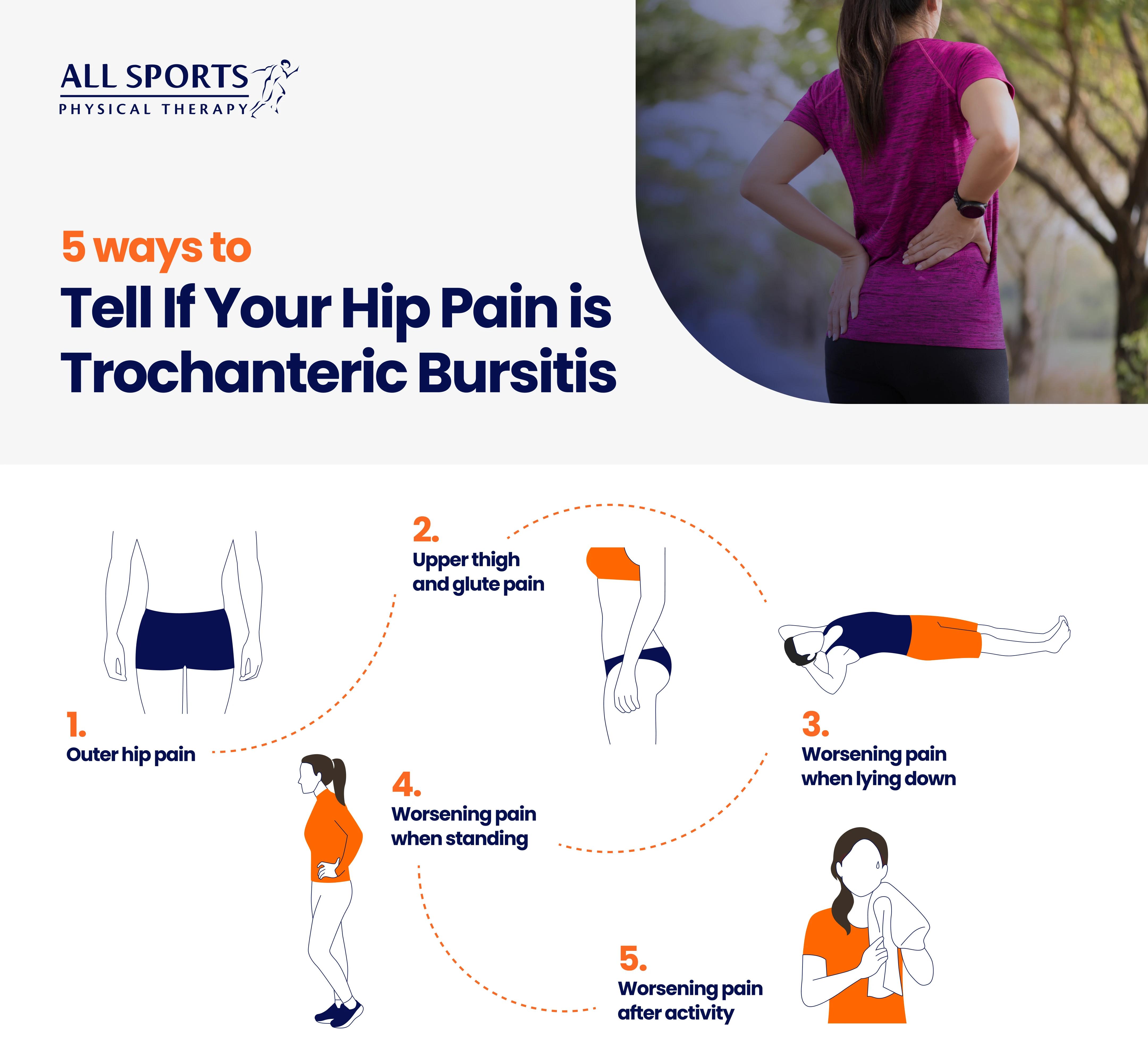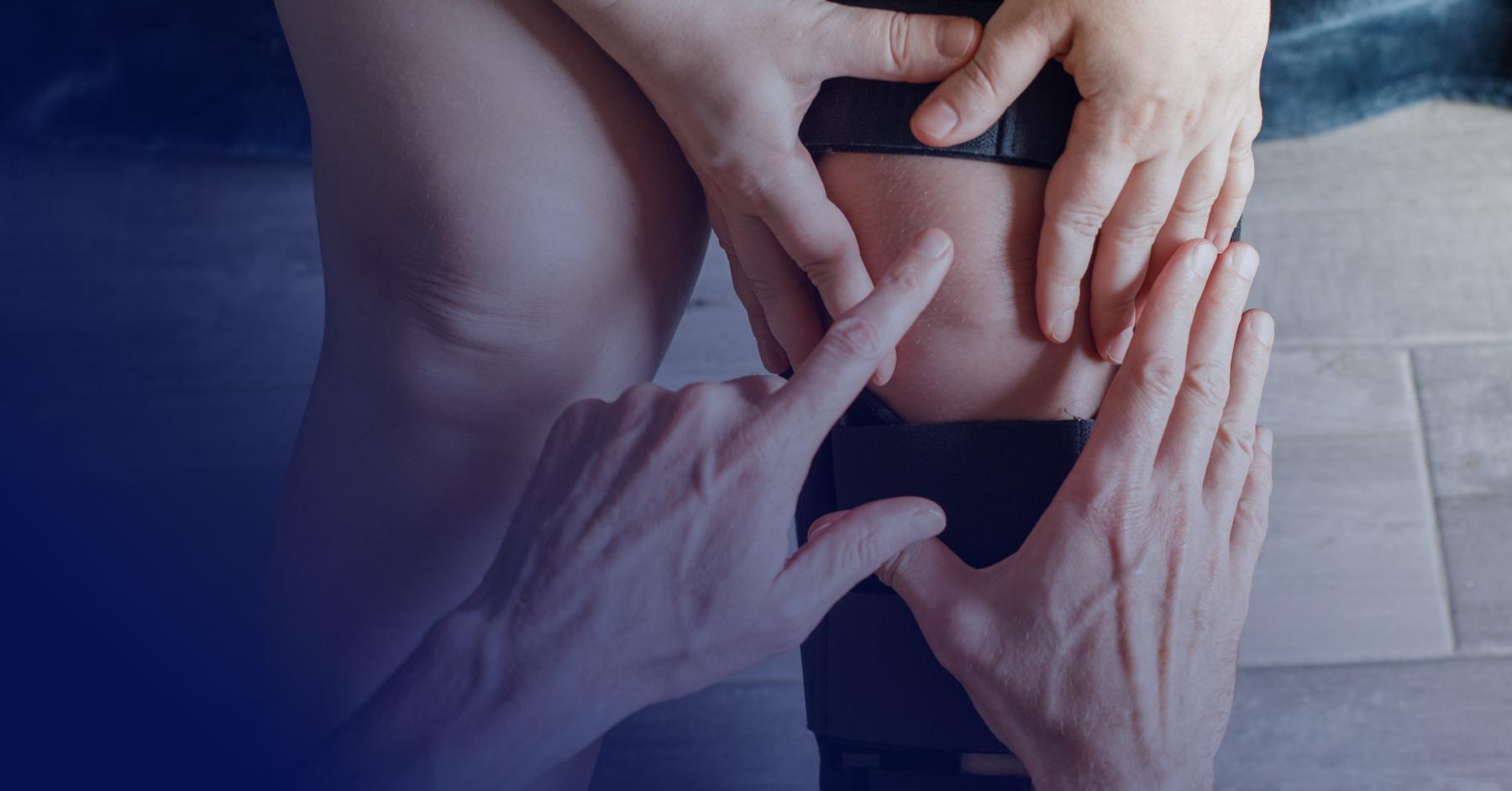5 Ways to Tell If Your Hip Pain is Trochanteric Bursitis
Hip Injuries

Hip pain is quite common, but is yours caused by trochanteric bursitis?
Hip pain is a common orthopedic complaint among patients and athletes of all ages. One of the most frequent causes is trochanteric bursitis. In fact, one study found that trochanteric hip bursitis affects nearly six out of every 1,000 adults.
Bursitis refers to an inflammation of the bursae, or small, fluid-filled sacs that buffer the bones and tissues around your joints. The bursae allow you to move your joints freely. But when they become irritated or inflamed, the damaged bursae cause pain and stiffness in the joint. One joint that relies on the bursae for a wide range of movements? Your hip. So let’s take a closer look at this condition and how it can be treated.
What is trochanteric bursitis?
Your hip joint connects your thigh bone (femur) to your pelvic bone. The pointed top edge along the outside of the femur bone is called the greater trochanter. Trochanteric bursitis occurs when the bursae covering the greater trochanter become inflamed or damaged.
Athletes who run and cycle are at the highest risk of trochanteric bursitis due to the repetitive strain those activities put on the hip. However, it can also develop in people with hip arthritis or spinal problems, such as scoliosis. An injury to the hip can also cause trochanteric bursitis.
Technically, there are two types of hip bursitis: trochanteric bursitis and iliopsoas bursitis. The main difference between the two is that iliopsoas bursitis is an inflammation of the bursae near the groin as opposed to the outer hip.
5 ways to tell if you have trochanteric bursitis

Key indications that you may have trochanteric bursitis include:
- Pain along the outside of the hip. It may start as a sharp pain and then progress to a dull, persistent ache.
- Pain along the upper thigh and the buttocks.
- Pain that worsens when lying on the affected side.
- Pain that worsens when you stand after sitting.
- Pain that worsens after an activity, such as walking up stairs.
To diagnose trochanteric bursitis, your doctor will perform a physical exam and review your activities to determine if you are putting undue pressure on the hip. You may be asked to lift your leg straight up. Imaging tests such as an X-ray or MRI may also be done to rule out other conditions.
How to treat trochanteric hip bursitis
Fortunately, trochanteric bursitis can be successfully treated with conservative measures in a matter of days or weeks. The following at-home remedies can bring about relief:
- Rest. The bursae need time to heal, so stop doing any activity that causes hip pain or stresses the joint.
- Ice therapy. Apply an ice pack three to four times a day for two to three days after the pain begins.
- Avoid sleeping on the painful hip. When sleeping, place a pillow between your knees.
- Avoid standing for long periods. Also, wear low-heeled, well-cushioned shoes.
- Take over-the-counter anti-inflammatory medications. Ibuprofen or Motrin are good choices.
- Use a cane. Assistive devices such as cane or crutches can relieve the pressure on the hip.
- Stretch. Stretching the muscles around the joint, like your hamstrings and glutes, can help reduce pain and keep the area mobile.
If the pain doesn’t subside in a few weeks, see a doctor for further evaluation. You may need physical therapy to strengthen the core muscles. In rare cases when conservative methods fail, surgery to remove the damaged bursa may be required.
Get back in the swing of things
If hip pain is stopping you from doing the activities you love, consult with one of our experienced physical therapists at All Sports Physical Therapy. We will craft an exercise program to get you back into the swing of things in no time. Contact us today for an appointment.



